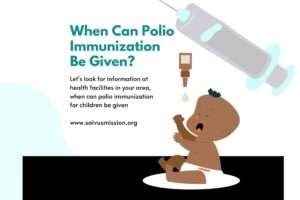Closing the Gap: Understanding Healthcare Equality Worldwide
Healthcare Equality Globally: A Comprehensive Overview
Introduction: Healthcare equality is a fundamental human right, yet millions of people around the world lack access to essential healthcare services. Addressing healthcare disparities requires a concerted effort to ensure that all individuals, regardless of their socioeconomic status or geographic location, have access to quality healthcare.
Global Healthcare Equality Statistics: According to the World Health Organization (WHO), approximately half of the world’s population lacks access to essential healthcare services. Many factors contribute to healthcare disparities, including poverty, inadequate infrastructure, and unequal distribution of healthcare resources.
Challenges in Achieving Healthcare Equality:
- Poverty: Economic constraints prevent many individuals and families from accessing healthcare services, including preventive care, diagnostics, and treatment.
- Geographic Barriers: Rural and remote communities often lack healthcare facilities and trained medical professionals, making it difficult for residents to access timely and quality healthcare.
- Healthcare Infrastructure: Inadequate healthcare infrastructure, including hospitals, clinics, and medical supplies, hinders access to essential healthcare services in many parts of the world.
- Healthcare Workforce: Shortages of trained healthcare workers, including doctors, nurses, and midwives, limit access to care and contribute to disparities in health outcomes.
- Healthcare Financing: High healthcare costs and lack of health insurance coverage prevent many individuals from seeking necessary medical care, leading to untreated illnesses and poor health outcomes.
Approaches to Promoting Healthcare Equality:
- Universal Health Coverage: Implementing universal health coverage (UHC) programs to ensure that all individuals have access to essential healthcare services without facing financial hardship.
- Primary Healthcare: Strengthening primary healthcare systems to provide comprehensive, preventive, and promotive healthcare services at the community level.
- Health Education: Educating communities about preventive healthcare measures, healthy lifestyle choices, and the importance of seeking timely medical care.
- Healthcare Infrastructure Development: Investing in healthcare infrastructure, including hospitals, clinics, medical equipment, and technology, to improve access to quality healthcare services.
- Health Workforce Development: Training and deploying skilled healthcare workers, including doctors, nurses, and community health workers, to underserved areas and populations.
Global Initiatives and Organizations: Several international organizations and initiatives are dedicated to promoting healthcare equality and improving health outcomes for all, including:
- World Health Organization (WHO): The WHO leads global health efforts, providing technical assistance, setting health standards, and coordinating international health initiatives.
- Partners In Health (PIH): PIH works to provide quality healthcare to underserved communities around the world, focusing on addressing the root causes of health disparities.
- Doctors Without Borders/Médecins Sans Frontières (MSF): MSF provides medical care in crisis-affected areas and advocates for improved access to healthcare for vulnerable populations.
- Global Fund to Fight AIDS, Tuberculosis, and Malaria: The Global Fund supports programs to prevent and treat HIV/AIDS, tuberculosis, and malaria, with a focus on reaching marginalized and underserved populations.
Conclusion: Healthcare equality is essential for promoting health and well-being and achieving sustainable development goals. By offering access to essential healthcare services for underprivileged children and vulnerable populations, we can improve health outcomes, reduce disparities, and build healthier and more resilient communities globally.




